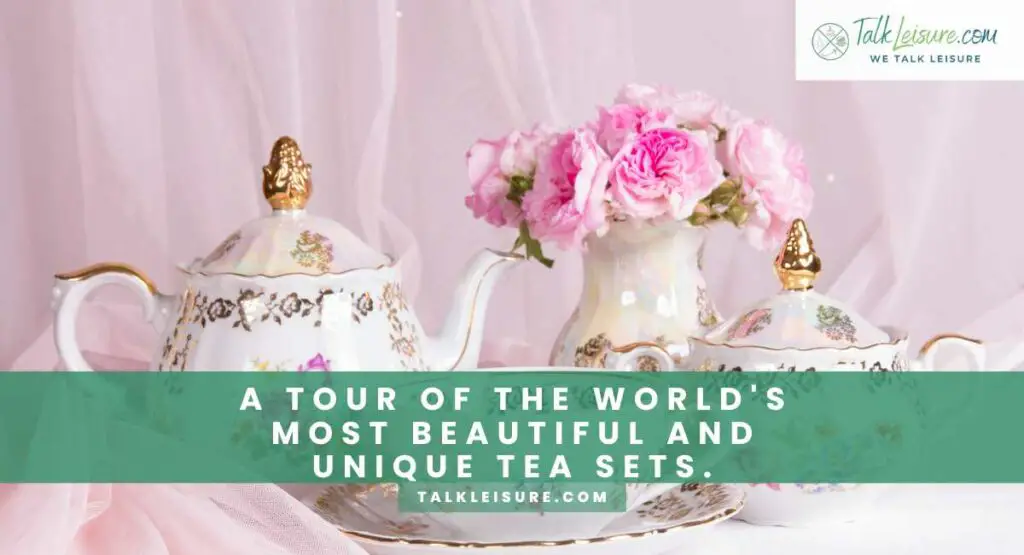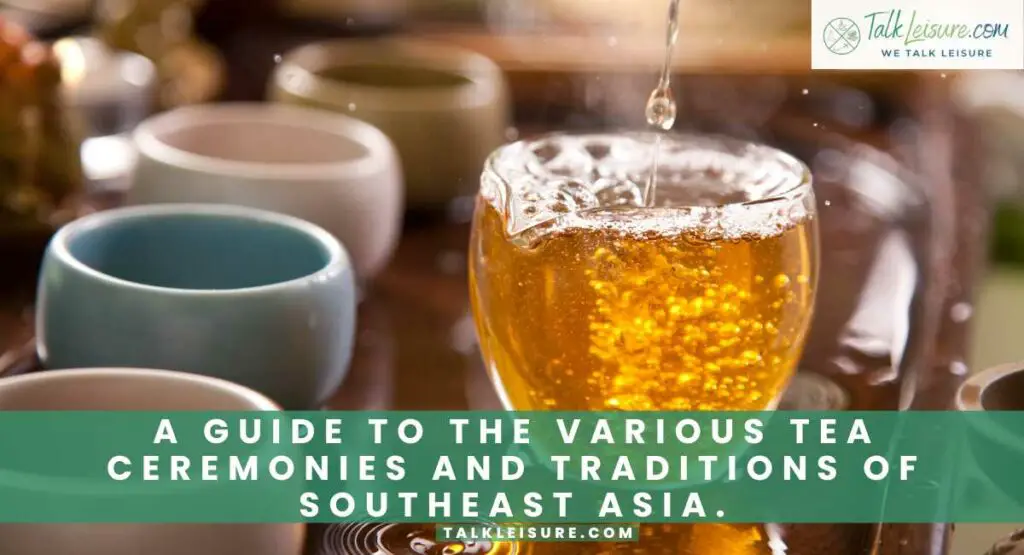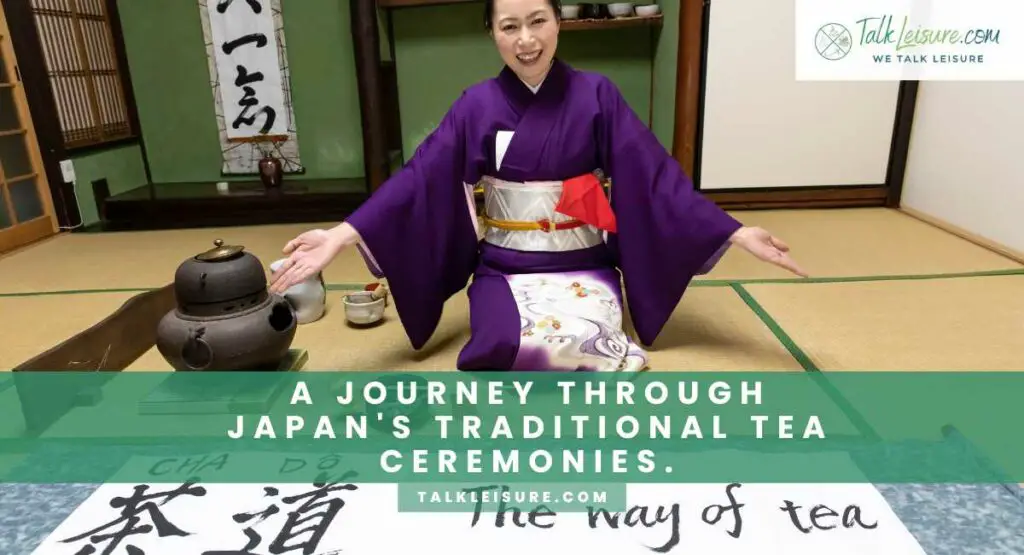Step into a world where leaves become poetry, where every gesture is a dance, and where each sip is a journey through centuries. Welcome to the enchanting realm of Chinese tea ceremonies, an art form that has graced the cultural stage for over a thousand years.
In this exploration, we’ll peel back the layers of history, from the accidental discovery by Emperor Shen Nong to the refined rituals of the Tang Dynasty.
We’ll delve into the key elements that breathe life into every ceremony and meet the maestros who keep this tradition alive. Get ready to sip, savor, and immerse yourself in the legacy of Chinese tea ceremonies.
Also read: A deep dive into Matcha: History, preparation, and benefits.
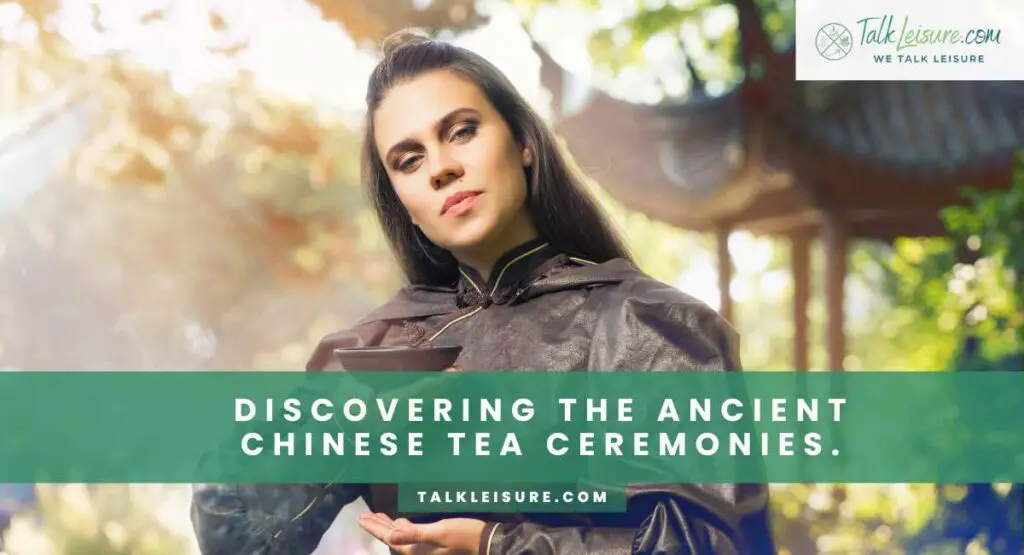
Steeped in Time: The History of Chinese Tea Ceremonies
Alright, tea time travelers, it’s time to hop on our ceremonial time machine and journey back through the annals of history. Chinese tea ceremonies are more than just a pleasant pastime; they’re a living tapestry woven with threads of tradition, innovation, and cultural exchange.
Ancient Origins: Brewing the First Pot
Our story begins in the misty mountains of ancient China, where the legend of Emperor Shen Nong unfolds. This curious monarch, known as the “Divine Farmer,” was said to have discovered tea by accident in 2737 BCE. As the story goes, a few tea leaves fluttered into his pot of boiling water and thus began the age-old affair between humanity and the Camellia sinensis plant.
Tea’s medicinal properties quickly caught on, and it became a staple in Chinese apothecaries. But it wasn’t long before its refreshing taste took center stage, and the art of tea-drinking blossomed.
The Tang Dynasty: Brewing the Culture
Fast forward to the Tang Dynasty (618-907 CE), often referred to as the golden age of Chinese tea. It was during this time that Lu Yu, the Sage of Tea, penned the timeless “Classic of Tea” (茶经, Chá Jīng). This monumental work served as the cornerstone for tea culture, outlining everything from cultivation to preparation.
Tea was no longer just a beverage; it was a way of life. Tea houses sprouted like mushrooms after a rain, becoming hubs of social, cultural, and intellectual exchange. The Tang Dynasty set the stage for tea’s ascent from a humble leaf to a revered art form.
The Song Dynasty: Brewing Perfection
Enter the Song Dynasty (960-1279 CE), a period that witnessed the birth of the iconic Chinese tea ceremony – the Gongfu Cha. This intricate, highly choreographed affair elevated tea preparation to an art form. It was all about precision, timing, and finesse, akin to a delicate dance.
Tea masters emerged, each one wielding a deep understanding of the leaf, the water, and the vessel. The Song Dynasty was an era of refinement, where every element of the ceremony was meticulously honed to achieve tea perfection.
Ming and Qing Dynasties: Brewing Elegance and Ritual
The Ming (1368-1644 CE) and Qing (1644-1912 CE) Dynasties brought further evolution to the tea ceremony. The Chaozhou Tea Ceremony, for instance, emphasized a more relaxed, natural approach, while the Beijing Tea Ceremony highlighted grandeur and precision.
Tea was not just a drink; it was a vehicle for cultural expression, a means to forge connections, and a source of spiritual contemplation. The ceremonies of this period reflected the diversity and dynamism of Chinese culture.
In this section, we’re stepping into the heart of a Chinese tea ceremony, exploring the key elements that make this ancient tradition come alive. Get ready to dive deep into the world of tea utensils, quality, and the alchemy of water. This is where the magic truly begins!
Also read: The traditions and tales behind the British afternoon tea.
Key Elements of an Ancient Chinese Tea Ceremony
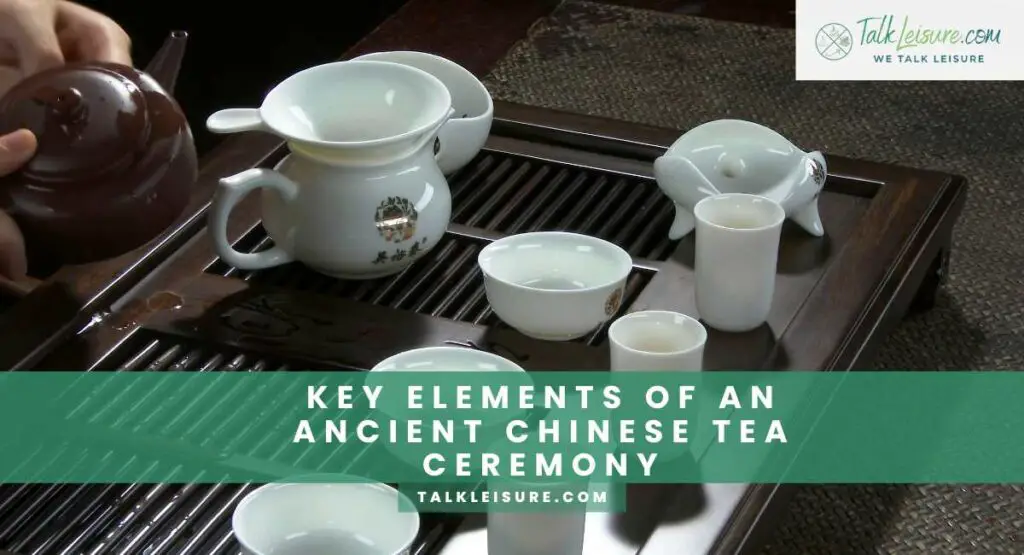
Alright, tea connoisseurs, let’s get down to the nitty-gritty of what makes a Chinese tea ceremony truly sing. These key elements are the backbone, the secret sauce, and the Jedi training in tea ceremonies. Buckle up, because we’re about to embark on a journey into the heart of this ancient tradition!
Traditional Tea Utensils: Tools of the Tea Trade
Imagine a symphony without instruments or a kitchen without pots and pans—that’s what a tea ceremony without traditional utensils would be like. We’re talking teapots, cups, strainers, and scoops—each with its own unique role in the performance.
Teapots, in particular, are the divas of this ensemble. They come in all shapes and sizes, each designed to enhance the flavors and aromas of the tea.
It’s like choosing the right wine glass for that special vintage—the vessel matters!
Importance of Tea Quality and Selection: The Leafy Stars of the Show
Now, let’s talk about the tea itself. It’s not just a matter of tossing any old tea into the pot. The quality and selection are like casting the lead actor in a blockbuster movie. You want the best!
From delicate green teas to bold, aged pu-erhs, each variety brings its own character to the ceremony. It’s about finding the perfect match for the occasion, setting, and mood. It’s like picking the soundtrack for a movie – it sets the tone!
Significance of Water Temperature and Quality: The H2O Alchemy
Ah, water – the unsung hero of the tea ceremony. Its temperature and quality can make or break the brew. It’s like being the lighting director in a theater production – you’ve got to get it just right.
Different teas have different preferences. Green teas like it cooler, while black teas prefer a bit of heat. And don’t even get me started on the importance of using clean, fresh water. It’s like serving a five-star meal on a tarnished plate – it just won’t do!
Also read: The secret world of tea sommeliers: How experts taste and rate tea.
Variations in Chinese Tea Ceremonies
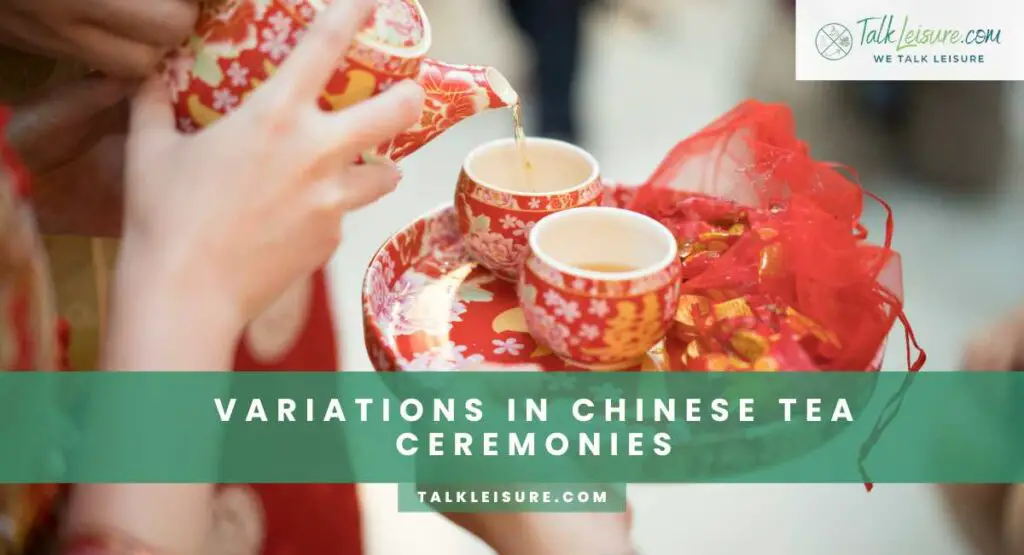
Welcome to the spice bazaar of Chinese tea ceremonies! Just like a seasoned chef adds their unique flair to a dish, different regions and historical periods have put their stamp on this ancient tradition. Let’s explore the rich tapestry of variations that make Chinese tea ceremonies a vibrant mosaic of culture and history.
Regional Differences in Tea Ceremony Traditions
Think of China as a patchwork quilt, each region weaving its own unique tale of tea ceremony tradition. For example, in the south, we have the intricate and elegant Gongfu Cha. It’s like a finely choreographed ballet, where every move is deliberate and graceful.
Meanwhile, in the southeast, we find the Chaozhou Tea Ceremony – a more relaxed, down-to-earth affair. It’s like a warm conversation with an old friend.
These regional differences aren’t just about the tea; they’re about the spirit and soul of the people who practice them. It’s a beautiful reminder that culture is as diverse and dynamic as the landscape it comes from.
Influence of Different Dynasties and Historical Periods
Now, let’s hop in our time machine and journey through China’s dynastic history. Just as fashion trends come and go, so do tea ceremonies evolve with the passage of time.
During the Tang Dynasty, for instance, tea was a social glue, bringing people together in grand, bustling gatherings. Fast forward to the Ming and Qing Dynasties, and we see a refinement of the ceremonies, with a focus on elegance and ritual.
Each dynasty left its mark on the way tea ceremonies were conducted. It’s like looking at a family photo album – you see the echoes of the past in the present.
These variations are the threads that weave the tapestry of Chinese tea culture. They remind us that traditions are not static; they’re living, breathing entities that adapt and grow with the times.
In the next section, we’re going to meet the rockstars of the tea world—the famous Chinese tea varieties that have been wowing audiences for centuries. Get ready to be introduced to some of the most iconic names in the tea universe!
Famous Tea Varieties in Chinese Tea Ceremonies
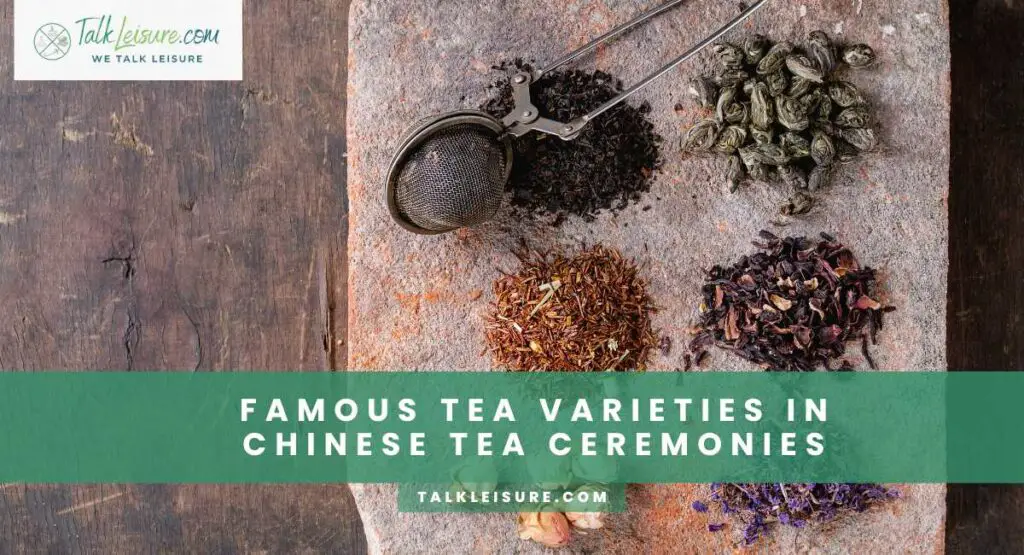
Alright, tea aficionados, it’s time to meet the rockstars of the Chinese tea world. These are the teas that have been stealing the show for centuries, captivating audiences with their unique flavors, aromas, and histories. Get ready for a front-row seat to the dazzling performance of Chinese tea varieties!
Overview of Different Types of Chinese Teas
Welcome back, intrepid tea explorers! Now that we’ve got our ceremonial robes on, it’s time to delve into the star of the show – the tea itself. Get ready to meet some of the most famous tea varieties that have graced Chinese tea ceremonies for centuries.
Green Tea: The Fresh-faced Charmer
First up, we have the poster child of Chinese teas – the green tea. It’s like the Tom Hanks of the tea world – universally loved and always a classic. From the delicate Dragon Well to the boldness of Bi Luo Chun, each green tea brings its own personality to the ceremony.
Think of green tea as the gentle morning sun, awakening your senses and inviting you to embrace the day. Its light, grassy notes are like a stroll through a dew-kissed garden. Perfect for those moments when you want to feel refreshed and rejuvenated.
Oolong Tea: The Drama Queen of Teas
Now, let’s talk about oolong tea, the Meryl Streep of our tea ensemble. This tea knows how to put on a show. With its partial oxidation, it strikes a balance between the crispness of green tea and the richness of black tea. Tie Guan Yin and Da Hong Pao are like the leading actors in the Oolong saga.
Oolong tea brings a touch of drama to the ceremony. It’s like the protagonist in a captivating play, with each infusion revealing a new layer of flavor. From floral to fruity, it’s a tea that keeps you guessing and leaves you craving an encore.
Pu-erh Tea: The Wise Elder of the Tea Clan
Now, let’s pay our respects to the wise elder of the tea clan—the pu-erh tea. This tea has seen it all, having been aged like a fine wine. It’s the Morgan Freeman of teas, exuding wisdom and depth. Sheng and Shou, the yin and yang of pu-erh, each offer a unique experience.
Pu-erh tea adds a layer of gravitas to the ceremony. It’s like sitting by a crackling fireplace, wrapped in a warm blanket of earthy, complex flavors. It’s a tea for contemplation, for moments when you want to ponder life’s mysteries.
White Tea: The Subtle Poet
Last but certainly not least, we have the white tea, the Emily Dickinson of our tea quartet. It’s understated, yet its elegance speaks volumes. Silver Needle and Bai Mu Dan are like verses in a quiet, contemplative poem.
White tea brings a sense of serenity to the ceremony. It’s like a gentle breeze on a summer afternoon, its delicate notes caressing your palate. It’s a tea for moments of quiet reflection, for times when you want to let the world slow down.
How Tea Selection Impacts the Ceremony Experience
Now, here’s where the magic happens. Choosing the right tea is like casting the lead role in a blockbuster movie. It sets the tone, dictates the mood, and defines the entire experience.
Picture this: a delicate green tea for a light-hearted afternoon gathering, or a bold pu-erh for a contemplative evening by the fireplace. The choice of tea is like selecting the soundtrack for a movie – it shapes the entire narrative.
And let’s not forget about the impact on the ceremony itself. The way each tea interacts with the water, the utensils, and the ambiance is its own unique performance. It’s a dance of flavors and aromas, a symphony of sensations that elevates the ceremony to an unforgettable experience.
Ceremonial Etiquette and Gestures
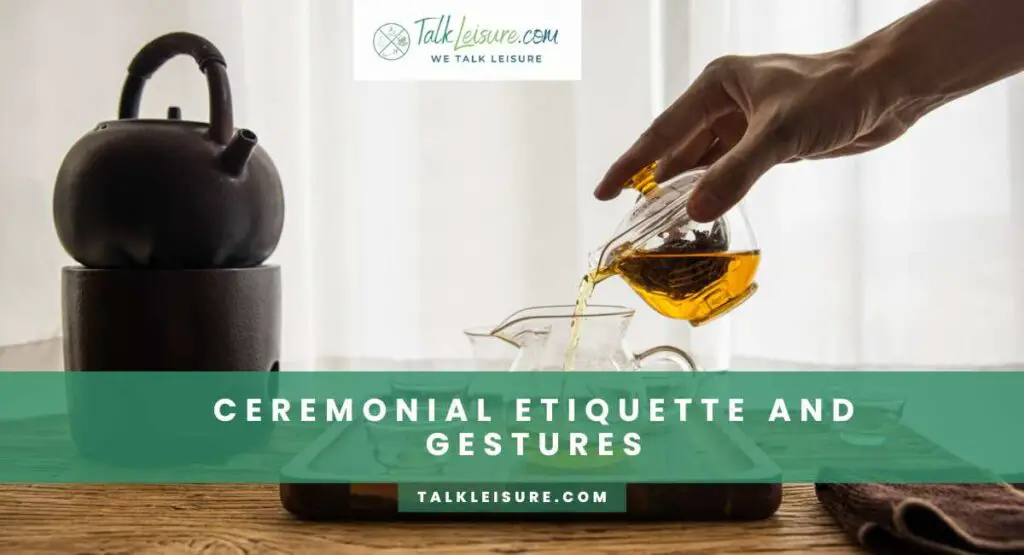
Welcome to the stage of grace and poise, where every movement and gesture tells a story. In the world of Chinese tea ceremonies, etiquette is the script, and gestures are the choreography. Let’s dive into the intricacies of conducting oneself in this elegant dance of tradition.
Proper Conduct During a Chinese Tea Ceremony
Think of a tea ceremony as a theatrical performance, and proper conduct as your lines. It’s about respect, mindfulness, and a deep appreciation for the art form.
First things first, posture matters. Sit up straight, but not rigidly. Think regal, not military drill. Show respect to the tea, the host, and fellow participants.
It’s like being at a royal banquet, but instead of knights and nobles, you’re surrounded by tea leaves and porcelain.
And then there’s the matter of conversation. Keep it soft, keep it relevant, but most importantly, keep it from overpowering the delicate symphony of the ceremony. It’s like background music in a movie – it complements, it doesn’t overshadow.
Understanding Gestures and Expressions Used in Ceremonies
Now, let’s talk about body language. In a Chinese tea ceremony, your gestures speak volumes. Holding the teapot, pouring the water, receiving a cup – each movement is a brushstroke on the canvas of the ceremony.
For instance, the way you present the teapot signifies humility and respect. The angle at which you pour the water, the speed at which it flows—these are all subtle expressions of your intent and respect for the tea. It’s like a silent conversation, where every gesture carries meaning.
And don’t forget about facial expressions. A smile, a nod—these are the punctuation marks in this tea-infused dialogue. They convey warmth, appreciation, and a shared understanding of the beauty unfolding before you.
In next Section, we’ll meet the maestros of Chinese tea ceremonies – the tea masters. We’ll delve into their historical significance, their training, and the expertise they bring to this ancient art form. Get ready to step into the shoes of a tea master!
The Role of Tea Masters in Chinese Tea Ceremonies
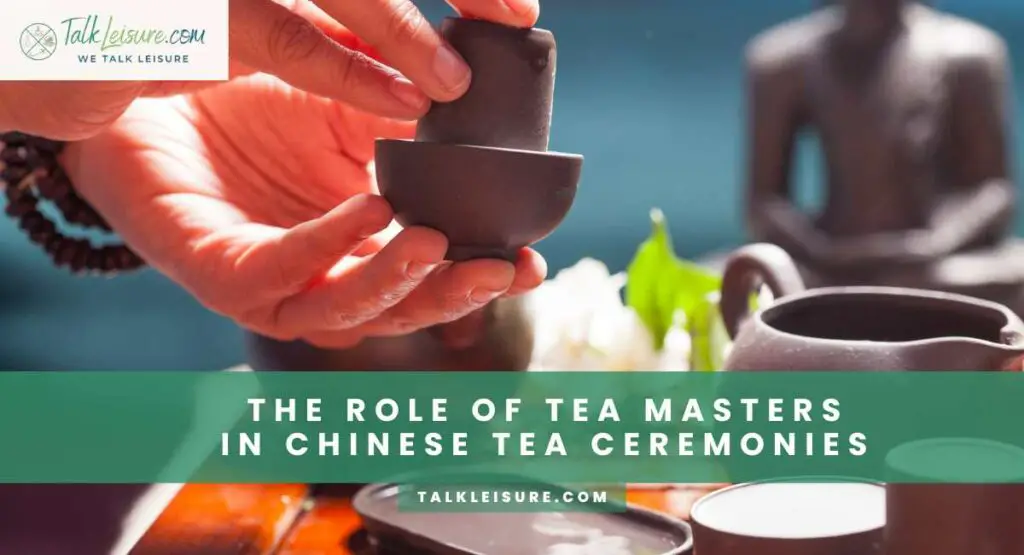
Welcome to the world behind the scenes, where tea masters are the unsung heroes, the wizards behind the curtain, the true maestros of the tea ceremony. These individuals are not just pourers of tea; they are keepers of tradition, guardians of knowledge, and orchestrators of a timeless art form.
Historical Significance of Tea Masters
Tea masters have walked the corridors of history, leaving their mark on the legacy of Chinese tea ceremonies. They were revered figures, their names whispered in awe. From Lu Yu, the Sage of Tea in the Tang Dynasty, to ancient monks who devoted their lives to perfecting the art, tea masters were cultural icons.
These masters were not mere practitioners; they were philosophers, poets, and artists in their own right. They elevated the ceremony from a routine to an art, infusing it with depth, nuance, and a profound sense of purpose. Their influence continues to ripple through the ages, shaping the way we perceive and practice tea ceremonies today.
Their Training and Expertise in Tea Ceremonies
Becoming a tea master is no walk in the park. It’s a journey of dedication, discipline, and deep introspection. These individuals undergo rigorous training, studying the intricacies of tea varieties, the nuances of preparation, and the delicate dance of gestures.
They learn to read the leaves to understand the subtle cues that guide each infusion. They become adept at selecting the right tea for the right moment, creating a seamless flow of experience for participants. It’s like a conductor leading an orchestra, knowing when to crescendo and when to let the silence speak.
But it’s not just technical prowess that defines a tea master. It’s a spiritual connection, a profound respect for the ceremony, and an unwavering commitment to its preservation. They are the torchbearers of tradition, passing down their knowledge to the next generation, ensuring that the art of Chinese tea ceremonies continues to flourish.
In the next Section , we’ll step into the modern era, exploring how ancient Chinese tea ceremonies have evolved and adapted in contemporary times. Get ready for a journey through time and tradition, with a twist of modernity!
Modern Adaptations of Ancient Chinese Tea Ceremonies
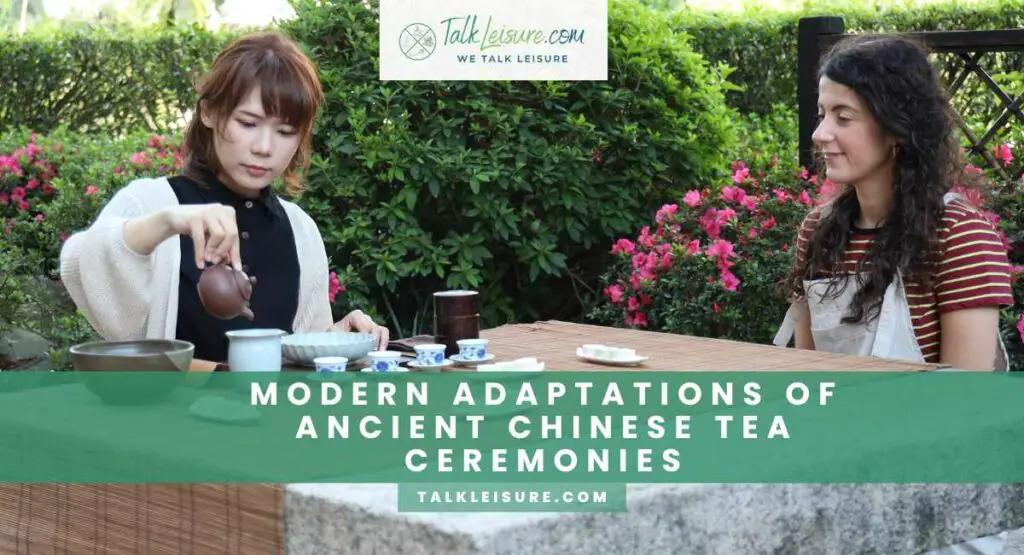
Welcome to the remix, where ancient meets contemporary and tradition gets a fresh coat of paint. In this section, we’re going to explore how the art of Chinese tea ceremonies has gracefully danced into the modern era, adapting to new tastes, lifestyles, and global influences.
Contemporary Interpretations of Traditional Ceremonies
Imagine a classic song, reimagined by a modern artist. That’s what’s happening with Chinese tea ceremonies. While the core principles remain, there’s room for personal expression and creativity.
Today, we see innovative twists on traditional ceremonies. Elements like music, art, and even technology find their way into the mix. It’s like blending old and new, creating a harmonious fusion that resonates with a diverse, global audience.
Some practitioners infuse mindfulness practices, incorporating meditation and deep breathing into the ceremony. Others explore unique pairings, like tea and chocolate or tea-infused cocktails. The result? A tapestry of experiences that honor tradition while embracing the spirit of innovation.
How Tea Ceremonies are Practiced in Modern China and Around the World
China, being the birthplace of tea ceremonies, naturally remains at the heart of this cultural practice. However, in modern times, we see a blend of old and new. Urban tea houses and specialty shops offer spaces for enthusiasts to come together, bridging the gap between tradition and modernity.
But the influence of Chinese tea ceremonies isn’t confined to its place of origin. Around the world, tea lovers have embraced this ancient art form. From Japan’s serene Japanese tea ceremonies to the lively tea cultures of India and England, the spirit of tea ceremonies transcends borders.
In contemporary times, tea ceremonies have become a bridge between cultures, a means of fostering connection and understanding. They’re not just events; they’re experiences that celebrate the rich tapestry of human heritage.
Conclusion
As our journey through the ancient Chinese tea ceremonies comes to a close, we find ourselves amidst the echoes of centuries. We’ve unraveled the delicate threads of history, explored the nuanced artistry of tea selection, and witnessed the grace of ceremonial gestures.
From emperors to modern enthusiasts, this tradition bridges time and culture, uniting us in a shared appreciation for the leaf’s magic. As we raise our cups in a final toast, let’s remember that in every sip, we taste not just tea, but a legacy of wisdom, connection, and the timeless beauty of human ritual. Here’s to the enduring charm of Chinese tea ceremonies.
Frequently Asked Questions
- How was tea discovered in ancient China?
According to Chinese legend, the discovery of tea dates back to around 2737 BCE during the reign of Emperor Shen Nong. He was known as the “Divine Farmer” and was revered for his knowledge of agriculture and herbal medicine.
One day, as the Emperor was resting under a tea tree, leaves from the tree fell into his boiling water. Intrigued by the pleasant aroma and the resulting infusion, he decided to taste it. The experience was delightful, and he found it to be refreshing and invigorating.
This serendipitous event is said to be the origin of tea in ancient China. Emperor Shen Nong’s accidental discovery led to further exploration of the tea plant and its various uses, ultimately paving the way for the development of the rich and diverse world of Chinese tea culture.
- Why was tea so important in ancient China?
Tea was vital in ancient China due to its medicinal properties, cultural significance, and social symbolism. It acted as a catalyst for intellectual and political discussions, played a pivotal role in trade, and influenced art and aesthetics. Its preparation evolved into an art form, contributing to the rich tapestry of Chinese culture, and remains a cherished tradition today.
- How many types of tea are there in China?
China is renowned for its diverse array of teas. There are six primary types of Chinese tea, each with its unique characteristics:
- Green Tea: This includes famous varieties like Dragon Well (Longjing) and Biluochun. Green tea is unoxidized, resulting in a light and refreshing flavor.
- Black Tea: Known as “hong cha,” popular varieties include Keemun and Lapsang Souchong. Black tea is fully oxidized, resulting in a robust, dark infusion.
- Oolong Tea: Ranging from lightly to heavily oxidized, oolong teas like Tie Guan Yin and Da Hong Pao offer a balance between green and black tea flavors.
- White Tea: This includes Silver Needle and Bai Mu Dan. White tea is minimally processed, resulting in a delicate, subtly sweet flavor.
- Yellow Tea: A rare category with teas like Jun Shan Yin Zhen, yellow tea undergoes a unique process of slight oxidation and “smothering” to create a mellow taste.
- Pu-erh Tea: This tea undergoes both fermentation and aging, leading to its distinct earthy, complex flavor. It is typically compressed into cakes or bricks for aging.
These primary types encompass a wide range of specific teas, each with its own terroir, processing methods, and flavor profiles.

